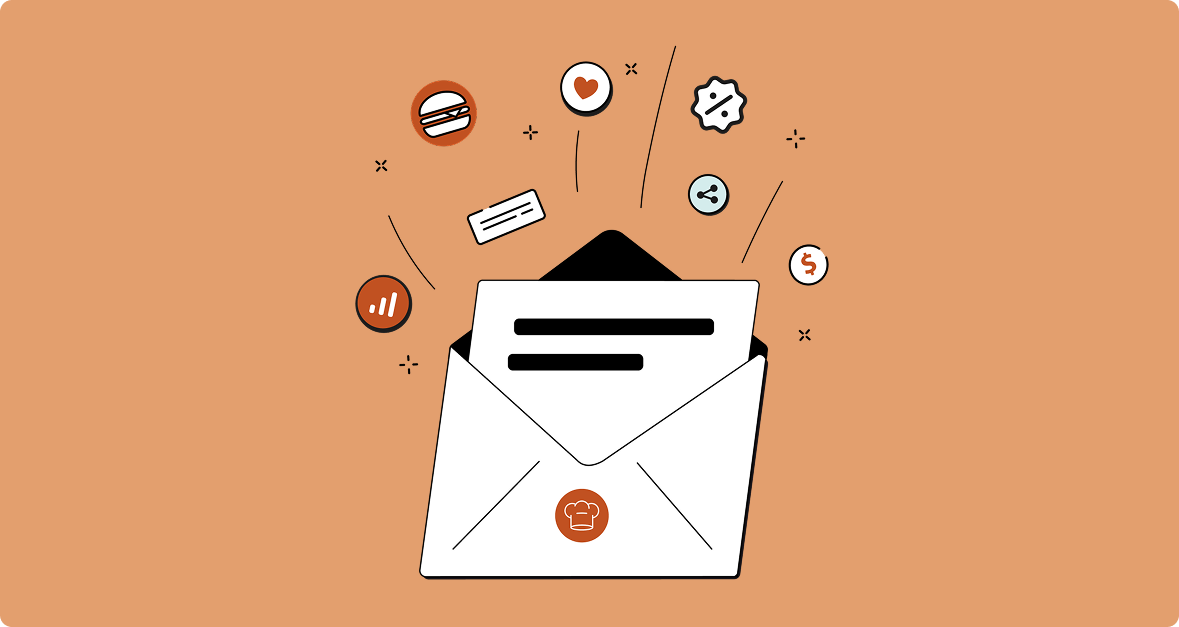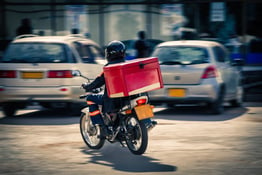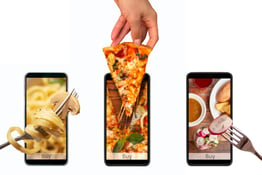For restaurants, third-party delivery apps like Grubhub, Uber Eats, and DoorDash have been both a lifeline and a liability. They expand reach, but at a steep cost:
- Commissions of 20–30 percent per order
- No access to customer data
- A delivery experience you can’t control
For a restaurant doing $500,000 annually in delivery sales, that could mean $100,000–$150,000 lost every year in fees alone.
“Eighty percent of orders on those platforms are the same people ordering the same food from the same places,” says Elliot Hool, VP of Marketing at Sauce. “It’s an expensive, indirect way for your loyal customers to reach you.”
Those aren’t new customers you’re paying for — they’re your regulars. Winning them back starts with reclaiming the direct relationship.
The Cost of Third-Party Delivery Apps for Restaurants
Every time a customer orders through a marketplace, the relationship shifts from your restaurant to the app. The customer sees their branding, interacts with their support, and trusts their policies. But if the food arrives cold or late, they’re still blaming your restaurant.
“If a third party delivers a bad experience, you’ve risked your most prized asset, your dining customer,” Elliot says. “That relationship belongs to the restaurant, not the marketplace.”
Relying solely on third-party apps means giving up the two things operators can’t afford to lose — profitability and brand loyalty.
What First-Party Delivery Needs in Order to Compete
Of course, the reason customers default to Grubhub and Uber Eats is because they know what to expect — a clean interface, real-time tracking, consistent refunds, and a sense of security.
“Customers trust those apps because they know what to expect. Our job is to make direct ordering just as reliable and easy,” says Elliot.
For a first-party delivery solution to work, it must meet the same baseline:
- Seamless ordering on desktop and mobile
- Dependable dispatch with accurate ETAs
- Clear communication and live support if something goes wrong
Anything less, and customers will slip back to the marketplace.
Loyalty Is Built After the Order
Often, restaurant delivery systems focus solely on acquiring the order, but the real test begins once the food is en route. Was the delivery timely? Were updates provided? Did someone step in to resolve an issue? These moments shape whether a customer will return.
“Too many first-party delivery solutions focus on getting the order but forget about what happens after,” Elliot explains. “Retention depends on the delivery experience itself.”
Restaurants that invest in what happens after the order — clear communication, accurate tracking, and responsive support — demonstrate that direct ordering is reliable and worth the customer’s trust. This follow-through is where restaurants prove direct ordering is worthwhile, and where loyalty begins to stick.
Owning and Using Customer Data
Here’s the other major disadvantage of third-party platforms — operators don’t actually know who their customers are. That means no email lists, no insights on geography, and no way to identify who your loyal customers really are.
“Restaurants should own their customer data, and know how to use it,” Elliot says. “That’s how you bring customers back, instead of letting a third party own the relationship.”
With first-party online ordering, operators can:
- Track order frequency and average ticket size
- Spot dormant customers and send reactivation offers
- Target campaigns by geography (such as nearby offices or neighborhoods)
- Build segmented loyalty programs
Even modest retention campaigns can pay off quickly. Recapturing just five percent of lapsed customers can add thousands of dollars in repeat revenue annually.
Changing Customer Habits Through Education
Even with a great first-party delivery system in place, many customers won’t know they can order directly unless restaurants push the message. Visibility is key.
“Put it front and center on your website, on your Google listing, even in the bag with flyers or stickers,” Elliot recommends. “There’s already huge interest in direct ordering. Restaurants just need to make it obvious and rewarding.”
Discounts, loyalty points, and customer appreciation perks can give diners the nudge they need to skip the third-party app and order directly. When combined with consistent, high-quality delivery, those efforts retrain customer habits in your favor.
The Payoff of First-Party Delivery for Restaurants
The financial case is clear: Operators can save up to 30 percent per order, adding up to tens of thousands of dollars annually. But as Elliot points out, the bigger win is long-term stability.
“Money is what gets restaurants interested in using Sauce,” he says. “But they stay for the peace of mind and the consistency of knowing their customers are taken care of.”
First-party delivery gives restaurants control over the entire customer experience, from order to doorstep. That means they maintain their margins, protect their brand, and reduce reliance on costly third-party apps.


Subscribe to Our Monthly Marketing Newsletter
Get proven strategies and tools to attract new customers, boost engagement, and grow your brand.
It also allows restaurants to use their customer data to drive loyalty programs, targeted promotions, and retention campaigns, turning one-time orders into repeat business.
Over time, these factors combine to create a more predictable, sustainable revenue stream, while keeping customers directly connected to the restaurant rather than a marketplace.
“Ultimately,” Elliot adds, “it’s about knowing that every order reflects your restaurant’s standards and keeps your customers coming back, not someone else’s app.”
Operator Checklist: 5 Steps to Win Back Delivery Customers
While many restaurants rely on third-party apps for delivery, there are concrete steps operators can take to bring those customers back and encourage direct ordering.
Before diving into the steps, Elliot emphasizes that reclaiming delivery customers benefits you in more ways than just cutting out third-party fees. If you create a reliable, branded experience, you encourage repeat orders. With that in mind, here’s a simple operator checklist to get started.
1. Make Direct Ordering Visible Everywhere
Highlight first-party ordering wherever customers interact with your restaurant — website buttons, Google listings, menus, or in-bag flyers — so choosing direct is simple and intuitive.
2. Match Third-Party Standards
Customers are used to the convenience of apps like DoorDash and Uber Eats. Elliot emphasizes that restaurants should provide accurate delivery ETAs, tracking updates, and responsive support to make direct orders feel just as seamless and reliable.
3. Focus on the Post-Order Experience
Fast, accurate delivery, proactive communication, and consistent branding in packaging are what keep customers coming back.
4. Reward Customers Who Order Direct
Give diners a tangible reason to bypass third-party apps. Incentives like discounts, loyalty points, or small perks show appreciation and encourage repeat direct orders, reinforcing the value of ordering straight from the restaurant.
5. Own and Use Your Customer Data
With first-party ordering, restaurants keep access to order history, contact info, and location insights. This gives restaurants the ability to run targeted offers, build loyalty campaigns, and re-engage dormant customers.
Following these steps helps restaurants not only recover customers from third-party platforms but also strengthen their relationship with loyal diners. As Elliot points out, “It’s the post-order experience — fast, dependable, and consistent — that keeps customers coming back.”
Implementing even a few of these strategies can turn occasional orders into repeat business and build lasting direct-order habits.
The Takeaway
Third-party delivery apps aren’t going away, but operators don’t have to hand over their best customers. By investing in first-party delivery solutions, leveraging customer data, and educating guests, restaurants can win back loyalty, profitability, and peace of mind.
As Elliot puts it, “Deliver on dependability, simplicity, and consistency, and customers will happily come back to you.”
Need more help?
Back of House connects operators with tools, insights, and solutions to run smarter, more profitable restaurants. If you’re looking for guidance on first-party delivery, customer loyalty, or tech solutions that fit your business, reach out to the Back of House team — we’re here to help.





